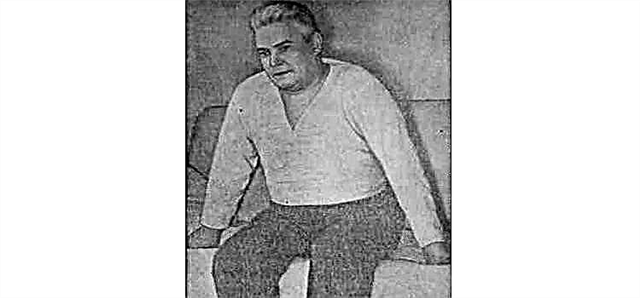Mucous discharge from the nose, which is popularly called simply snot, is usually not taken seriously by people. In principle, this is the body's primary defense reaction to external or internal stimuli. A kind of signal that something in the body is not in order and it is necessary to look for the reason in order to prevent the development of the disease. But this is only if the discharge is transparent, and they are not accompanied by an increase in body temperature or pain. When the color of the discharge changes, for example, brown snot appears, it's time to sound the alarm.
Reasons for color change
 A change in the color of mucous discharge from the nose allows the specialist to determine to some extent the cause of their appearance and the stage of development of the disease. Especially if they appear regularly and are accompanied by other unpleasant symptoms. Brown snot from an adult's nose may appear due to the following reasons:
A change in the color of mucous discharge from the nose allows the specialist to determine to some extent the cause of their appearance and the stage of development of the disease. Especially if they appear regularly and are accompanied by other unpleasant symptoms. Brown snot from an adult's nose may appear due to the following reasons:
- infection of the frontal or maxillary sinuses, which led to inflammation and accumulation of pus, often blood is also present in such secretions;
- constant ingress of iron oxide (rust) into the nose when working with metal - metal scale damages the nasal mucosa, blood oozes from microcracks, and the rust itself is brown;
- brown snot in the morning can signal vascular atherosclerosis or sudden jumps in blood pressure due to which small capillaries burst, and thickened blood gives the snot a brown color;
- with atrophic changes in the nasal mucosa caused by prolonged smoking, work in hazardous industries, taking narcotic drugs, abuse of vasoconstrictor drops.
Since it is simply impossible to find out the exact cause of such an uncharacteristic color of snot on your own, and the lack of treatment in some cases can lead to serious complications, the first thing to do is to consult a doctor.
Stages and features of sinusitis
Most often, brown snot is a signal that the patient has developed purulent sinusitis. Inflammation of the maxillary sinuses is a serious and rather dangerous disease due to their anatomical location. And here it does not matter whether the disease is caused by pathogenic microorganisms, hypothermia or is of an allergic nature. An active inflammatory process, if untreated, can go to the meninges, which sometimes has very serious consequences - up to and including death.

Sinusitis develops gradually and has three stages: subacute, acute and chronic. Each of them has characteristic features and symptoms:
- The subacute stage is characterized by difficulty breathing; copious thick mucous discharge of white, and later yellow or orange; accumulation of mucus on the back of the throat, a slight increase in body temperature. The insidiousness of the disease is that during this period it is very similar to the common cold. Therefore, it is often treated at home with folk remedies that do not always cope, especially if the disease is caused by viruses or bacteria. And most often, patients go to the doctor when the disease enters the acute phase.
 The acute stage occurs when sinusitis progresses, and purulent discharge begins to accumulate in the maxillary sinuses. At this moment, brown snot appears from one nostril or both at once (depending on whether the inflammation is unilateral or bilateral). Added to the primary symptoms are: headache; feeling of strong pressure and distention of the sinuses of the nose; possible coughing due to constant irritation of the larynx. Often, the body temperature rises sharply and significantly.
The acute stage occurs when sinusitis progresses, and purulent discharge begins to accumulate in the maxillary sinuses. At this moment, brown snot appears from one nostril or both at once (depending on whether the inflammation is unilateral or bilateral). Added to the primary symptoms are: headache; feeling of strong pressure and distention of the sinuses of the nose; possible coughing due to constant irritation of the larynx. Often, the body temperature rises sharply and significantly.- Chronic stage. If the disease is not completely cured, it becomes chronic. Sinusitis periodically worsens as soon as a person finds himself in adverse environmental conditions or his immunity is weakened after any previous illness. It is very difficult to treat and usually remains a lifelong problem, so it is better not to bring the disease to this stage.
Unfortunately, brown snot in an adult can signal that sinusitis has already started and is in its last stage. Therefore, if you are not sure that their appearance is not caused by external reasons, you should immediately go to the doctor.
Treatment and prevention
 A doctor should treat brown snot in an adult. And only after the diagnosis has been accurately established. Such discharge is almost always a symptom of a serious illness. Therefore, all attention should be directed to eliminating the cause and preventing relapse. The course of therapy always begins with diagnostics, which may require a number of laboratory tests.
A doctor should treat brown snot in an adult. And only after the diagnosis has been accurately established. Such discharge is almost always a symptom of a serious illness. Therefore, all attention should be directed to eliminating the cause and preventing relapse. The course of therapy always begins with diagnostics, which may require a number of laboratory tests.
Treatment of sinusitis at the initial stage is carried out with anti-inflammatory and antibacterial drugs. At the discretion of the doctor, physiotherapeutic procedures are connected: ultrasound, phonophoresis, electrophoresis.
With a large amount of pus, it is sometimes passed to puncture the maxillary pauses in order to bring their contents out. At the stage of the disease subsiding, the use of alternative methods of treatment can also be useful. But only with the permission of the doctor.
If the brown color of snot is due to exposure to external stimuli, then preventive measures are necessary:
- when working in hazardous industries, the use of personal respiratory protection;
- complete cessation of smoking and other bad habits;
- regular cleansing of the nasal passages with cotton swabs and rinsing with saline;
- with a tendency to allergies, you need to constantly have antihistamines on hand;
- for colds, acute respiratory viral infections and flu, the mandatory use of nasal drops with antibacterial, antiseptic and anti-inflammatory effects.
And it is very important not to self-medicate in any way. The use of some folk remedies for purulent sinusitis can lead to an accelerated development of the disease and serious complications.

 The acute stage occurs when sinusitis progresses, and purulent discharge begins to accumulate in the maxillary sinuses. At this moment, brown snot appears from one nostril or both at once (depending on whether the inflammation is unilateral or bilateral). Added to the primary symptoms are: headache; feeling of strong pressure and distention of the sinuses of the nose; possible coughing due to constant irritation of the larynx. Often, the body temperature rises sharply and significantly.
The acute stage occurs when sinusitis progresses, and purulent discharge begins to accumulate in the maxillary sinuses. At this moment, brown snot appears from one nostril or both at once (depending on whether the inflammation is unilateral or bilateral). Added to the primary symptoms are: headache; feeling of strong pressure and distention of the sinuses of the nose; possible coughing due to constant irritation of the larynx. Often, the body temperature rises sharply and significantly.

